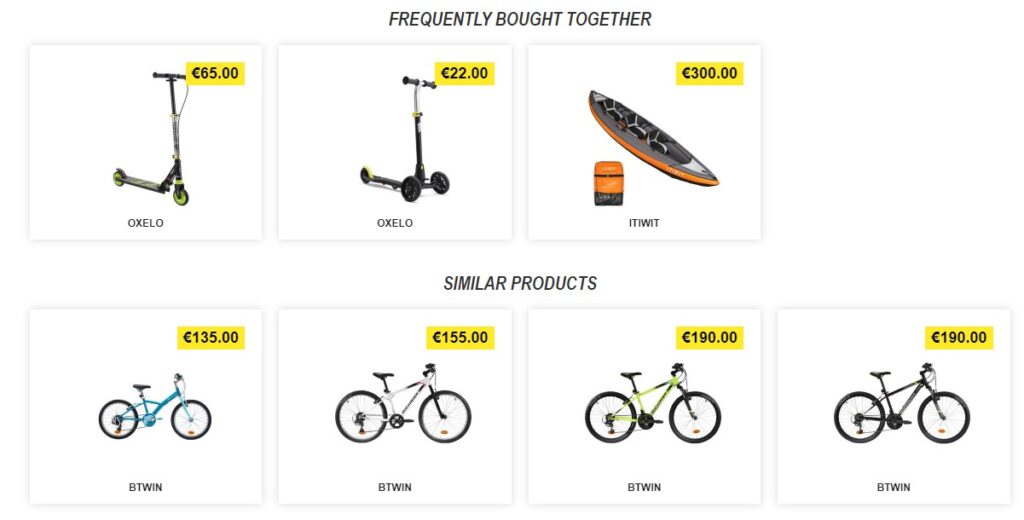The Ultimate Guide To 5 BEST PROMOTION STRATEGIES FOR E-COMMERCE
- 24 August 2021
On our blog, we frequently talk about diverse pricing strategies and channels where you should offer your products. The ultimate goal is always the same – to sell more. And today, we want to talk to you exactly about increasing sales. We have made a list of five strategies that will help you get more customers in no time. Do you want to discover all of them? Read on!
Catching customer attention is not easy nowadays. There are millions of online stores and hundreds of millions of ads promoting them. If you don’t want to disappear in this information noise, you need a fool-proof strategy. Online stores worldwide use different methods and techniques, but five of them tend to work best in many situations. So, without further ado, let’s meet our contestants:
E-commerce marketing ideas
1st PROMOTION STRATEGY: PERFORMANCE MARKETING
If you want to attract more customers in a short time, that’s your best bet. Performance marketing is all about results. In this marketing strategy, you pay only for the specific action your potential customer takes. These actions can be, for example:
- Clicking your ad
- Signing up for the newsletter
- Leaving an email address
- Placing an order
Performance marketing strategies are frequently settled in the CPC (cost per click) or CPA (cost per action) models. Currently, there are two of the most popular and effective performance marketing tools:
- Google Ads (these are text ads displayed in the search engine result page (SERP), based on specific queries users type in the Google)
- Facebook Ads (ads displayed in Facebook to potential customers who meet specific conditions, i.a. concerning their location, interests, profession, income, and education. Facebook Ads work perfectly with Facebook Shops, the latest e-commerce service provided by Facebook.)
Make effective ads, optimize your campaigns, make sure your offer is attractive, and you can count profits!
2nd PROMOTION STRATEGY: AFFILIATE MARKETING
The general idea behind affiliate marketing is quite straightforward. You, as an online store owner, are referred to as an advertiser. You have an online store with products you want to advertise and sell. In order to achieve this goal, you work with affiliates (publishers) who have the necessary space (a website, a Facebook profile, etc.) and a community of fans/followers. Affiliates promote your products for a commission that they get every time someone from their community (e.g., via a unique code) places an order in your store. It’s a clear win-win model, and estimations are affiliate programs contribute 30% of revenue for retail companies[1].
3rd PROMOTION STRATEGY: GOOGLE
Yes, we’ve already talked about Google Ads, but you have to know that Google’s offer for the e-commerce sector is much wider! The giant from Mountain View allows you to use the following tools:
- Merchant Center: Use it to submit information about your store and products to Google and share it with buyers via Google Shopping
- PLAs: Product listing ads enable you to showcase your selected offers directly in the SERP

- Google My Business: If you have a brick-and-mortar store, you can show your inventory directly on your Business Profile[2]
- Google Pay: Gpay is a safe and convenient way to pay for products online. If you implement it in your store, more customers will be willing to place an order.
4th PROMOTION STRATEGY: REMARKETING/RETARGETING
Did you know that consumers are 70% more likely to convert with retargeting?[3] This strategy is based on reminding yourself to customers who visited your website, maybe even started the purchasing process, but never finished it. Getting back to these customers can be very effective. All you need is a decent retargeting tool (although bear in mind that even Google offers various remarketing ads you can use to drive more traffic to your store).
For example, as much as 35% of cart abandonment in the fashion industry results from the need to think more about the purchase[4]. Ignoring or neglecting these hesitating customers can cost you thousands of dollars every year.
In fact, remarketing is one of the cheapest ways to increase sales in your store. Why wouldn’t you give it a shot?
5th PROMOTION STRATEGY: SMART PRODUCT RECOMMENDATIONS AND PERSONALIZATION
These two techniques go hand in hand. With smart product recommendations, you can make the most of cross-selling (which is all about offering complementary products) and upselling (selling the higher/more expensive model of the same product). For example, see how Decathlon, a European chain of stores with sports equipment, uses both these techniques in their online store:

“Frequently bought together” are, of course, products based on cross-selling. But notice that they used the term “similar products” to showcase more expensive options of the product the customer is currently browsing.
And what about personalized recommendations? In general, they should be tailored to your customers’ needs and previous purchases. Online stores frequently use AI to improve their product recommendations. If they are effective, they can significantly improve the average order value (AOV) in your store, and hence – help you make more money.
Don’t forget about pricing!
For all these strategies to work, you need fair prices in your store. And that’s where we step into the game. See our solutions for online stores and improve your pricing strategy today!
[1] https://bloggingx.com/affiliate-marketing-statistics/
[2] https://smallbusiness.withgoogle.com/retail/#!/
[3] https://meazy.co/blog/10-retargeting-statistics-2021
[4] https://www.codeinwp.com/blog/shopping-cart-abandonment-rate-stats/